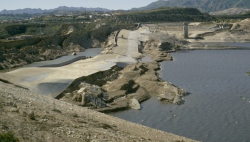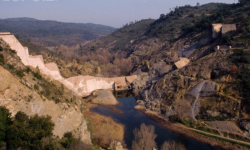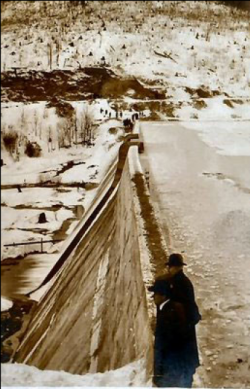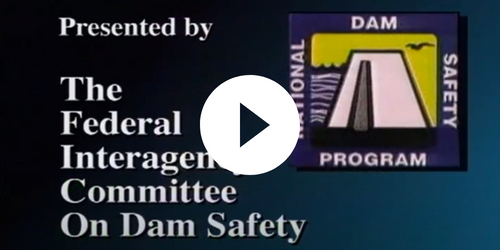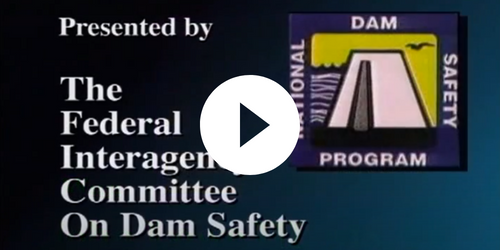Description & Background
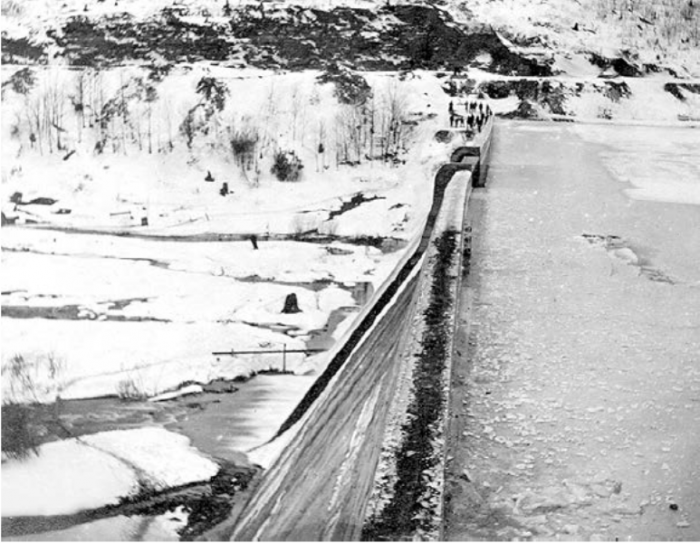
Bulging of dam crest east of spillway observed at Austin (Bayless) Dam in January 1910. The uplift pressures caused layers of the foundation rock to slide on each other, resulting in the bulge and ultimately the failure of the dam (Photo source: the Potter County Historical Society).
Foundation defects cause approximately 30% of all documented dam failures in the United States.¹ Because of inherent uncertainty associated with the properties of the foundation it is essential that the regional geology and dam foundation geologic conditions be thoroughly investigated and characterized in order to reduce the risk of failure.
Prior to the design phase, reconnaissance and feasibility studies should be performed at the proposed dam site to understand the regional geology and properly characterize the site conditions as they relate to stability. Such studies should be conducted by an experienced engineering geologist with training in dam stability. A complete understanding of the geologic conditions is critical to the evaluation of dam site selection, feasibility, and stability as well as selection of the dam type and configuration. In addition, constructability and costs are directly related to the geologic conditions, particularly the potential need for mitigation of seepage and/or stability concerns.
During the construction phase of the dam, additional geotechnical investigations and pilot tests may be conducted in order to finalize the foundation preparation specifications and foundation treatment methods most compatible with the geologic conditions and dam design. Consideration of geologic features through comprehensive geotechnical investigations conducted throughout several phases of dam design will ensure the most appropriate means of foundation preparation and treatment at the site.
Foundation treatment may include surficial measures such as excavation of low quality rock, application of dental concrete, or contact grouting; deeper treatments such as the installation of a cutoff wall, foundation grouting or a combination of the two, and the use of drains and filters at the base of concrete dams or within an embankment. In seismically active regions, the construction of a berm or buttress on the upstream or downstream slope may be required to increase the factor of safety against seismically induced stability failures, sliding, and settlement due to strength reductions from shaking and liquefaction.
Improper foundation preparation resulting from a lack of geologic consideration can lead to dam failure by a variety of modes including differential settlement, slope instability, sliding, uplift pressures, uncontrolled foundation seepage, internal erosion, shearing, and faulting.
References:
(1) ASDSO. (2014). Dam Failures and Incidents. Association of State Dam Safety Officials.
Summary
Photos
- Lower San Fernando Dam failed due to the liquefaction of the hydraulic fill embankment on top of unconsolidated alluvium.
- Remains of Malpasset Dam which failed because its left abutment was built upon a gneiss formation incapable of supporting the pressures experienced at the dam. Note complete removal of dam section at left abutment where instability was initiated in the foundation (Photo source: Richard E. Goodman, 2013 AEG Shlemon Specialty Conference).
- The failure of the Baldwin Hills Dam and Reservoir can be partially attributed to the fact that it was built upon a fault system and was located near an oil field where the underground injection of pressurized liquid occurred. Note that failure initiated in the foundation but manifested in the embankment as a seepage erosion issue.
- The Austin (Bayless) Dam slid several feet as a result of being built on a poor foundation. Uplift pressures caused the layers of foundation rock to slide on each other, causing the dam to bow and cracks to form (Photo source: the Potter County Historical Society).
Videos
- John W. France presents an overview of foundation preparation and treatment methods as part of the Association of State Dam Safety Officials On-Demand Webinar series.
- David B. Wilson, Trent L. Dreese, and Daniel P. Stare present an introduction to dam foundation grouting as part of the Association of State Dam Safety Officials On-Demand Webinar series.
- Part 1 of an instructional video by Dr. James K. Mitchell on ground improvement as part of the Federal Emergency Management Agency’s Expert Video Series on dam safety.
- Part 2 of an instructional video by Dr. James K. Mitchell on ground improvement as part of the Federal Emergency Management Agency’s Expert Video Series on dam safety.
Case Studies
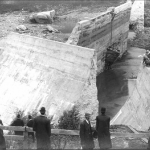
Austin (Bayless) Dam (Pennsylvania, 1911)
Austin Dam (also known as Bayless Dam) was constructed between May and November of 1909 just outside Austin, Pennsylvania, a town of approximately 2,500 people in Potter County.

Baldwin Hills Dam (California, 1963)
The Baldwin Hills Reservoir was constructed in 1951 to provide water to the south and southwest portions of the city of Los Angeles, California. Sitting atop one of the tallest hills in the region, the reservoir was confined on three sides by compacted earth dikes...
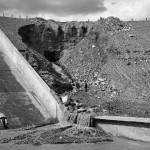
Fontenelle Dam (Wyoming, 1965)
Fontenelle Dam is located on the Green River near La Barge, Wyoming and was originally built in 1964 to provide irrigation water and hydropower for a region of southwest Wyoming. The earthfill embankment structure...
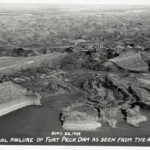
Fort Peck Dam (Montana, 1938)
Beginning at about 1:15 pm on September 22, 1938, the upstream slope of the dam adjacent to the right abutment experienced a large failure as the construction work had progressed to within 20 feet of the final dam crest elevation. One hundred eighty men were working in the area.

Fujinuma Dam (Japan, 2011)
On March 11, 2011, a massive 500-600 km rupture off the east coast of Japan resulted in a powerful Magnitude 9.1 earthquake and subsequent tsunami. The shaking also damaged at least 745 dams in Fukushima Prefecture and caused a rare seismically induced failure of Fujinuma Dam.

Langley Dam (South Carolina, 1886)
The failure of Langley Dam, located near Aiken, South Carolina, is one of the more noteworthy and surprising far field effects of the M7.0, August 31, 1886, Charleston, SC earthquake...

Malpasset Dam (France, 1959)
Malpasset Dam was a concrete arch dam located on the Riveria in the Cannes District near Fréjus, in Southern France. Exhibiting curvature in both the plan and section directions, the double-curvature arch structure spanned the Reyran River. At the time of completion in 1954, it was reported...

Marshall Lake Dam (Colorado)
Routine inspections of Marshall Lake Dam in the early 21st century were relatively uneventful. The 75-foot-tall, 2,400-foot-long high hazard earth embankment dam had relatively flat slopes...
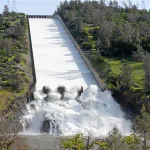
Oroville Dam (California, 2017)
With a height of 770 feet, Oroville Dam is the tallest dam in the United States. Completed in 1968 and located north of Sacramento in the foothills of the Sierra Nevada mountains, this large earthfill embankment dam is owned by the California Department of Water Resources (DWR) and is one of the key features...
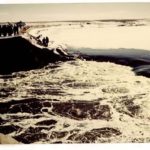
Prospect Dam (Colorado, 1980)
Prospect Reservoir Dam is owned by the Henrylyn Irrigation District (District) and is located in Weld County (County), Colorado approximately 40 miles northeast of Denver. The District operates and maintains a fifty mile long canal system, 4 reservoirs, and several hundred miles of...
Additional Case Studies (Not Yet Developed)
- Alla Sella Zerbino Dam (Italy, 1935)
- Shi Kang Dam (Taiwan, 1999)
Best Practices

Federal Guidelines for Dam Safety: Earthquake Analyses and Design of Dams
Author: Federal Emergency Management Agency
Date Published: 2005
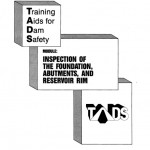
Training Aids for Dam Safety: Inspection of the Foundation, Abutments, and Reservoir Rim
Author: Interagency Committee on Dam Safety
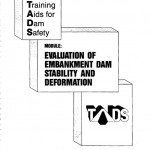
Training Aids for Dam Safety: Evaluation of Embankment Dam Stability and Deformation
Author: Interagency Committee on Dam Safety
Date Published: Unknown
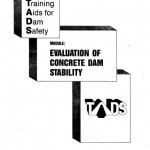
Training Aids for Dam Safety: Evaluation of Concrete Dam Stability
Author: Interagency Committee on Dam Safety
Date Published: Unknown
Other Resources
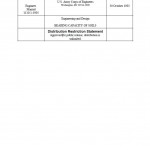
Bearing Capacity of Soils, EM 1110-1-1905
Author: U.S. Army Corps of Engineers
Engineering Manual for USACE
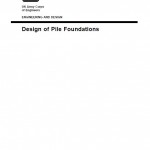
Design of Pile Foundations, EM 1110-2-2906
Author: U.S. Army Corps of Engineers
Engineering Manual for USACE

Geotechnical Investigations, EM 1110-1-1804
Author: U.S. Army Corps of Engineers
Engineering Manual for USACE


Rock Reinforcement, EM 1110-1-2907
Author: U.S. Army Corps of Engineers
Engineering Manual for USACE
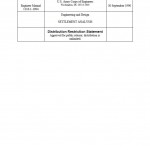
Settlement Analysis, EM 1110-1-1904
Author: U.S. Army Corps of Engineers
Engineering Manual for USACE
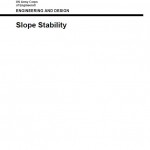

Evaluating and Communicating Geological and Geotechnical Information for Use in Risk Assessment
Author: U.S. Bureau of Reclamation
Best Practices from USBR

